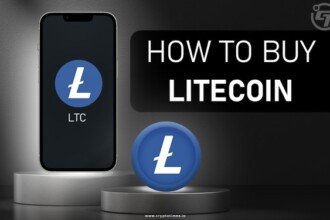The popularity of Decentralized Finance is expanding more than ever into other sectors such as accounting, online marketplaces, and supply chains. Even though the technology is still relatively new and unknown to a lot of people, some are fascinated by how it is revolutionizing traditional finance.
When we talk about Decentralized Finance, we can not go without mentioning Automated Market Maker (AMM). An Automated Market Maker is nothing but a robot that acts as a medium to quote you a price between two assets. To understand AMM and how it works, you should be aware of market makers. So let’s define it.
What is Market Maker?
A market maker is a financial middleman, who facilitates the process required to provide liquidity for trading pairs on centralized exchanges. Essentially, a market maker provides two-sided market prices for security, with the aim of maximizing profit and minimizing risk.
A centralized exchange supervises trader activity and offers an automated mechanism to make sure that trading orders are matched appropriately. For instance, when Trader A wants to buy 1 ETH at $1200, the exchange makes sure that it finds a Trader B that is willing to sell 1 ETH at Trader A’s preferred exchange rate.
This way, the centralized exchange more or less acts as a middleman between Trader A and Trader B. The role of a market maker is to make the trading process seamless and match users’ buy and sell orders in record time.
You might be wondering, what happens when the exchange cannot find suitable matches to buy and sell orders simultaneously? In such a case, we say that the liquidity of the assets in question is low. When liquidity is low, slippages occur, which means assets’ prices at the point of executing a trade shift before the trade is completed.
This adds to the volatility in the crypto market. Thus, exchanges must ensure that transactions are executed instantaneously to prevent price slippages.
In the process of achieving a fluid trading system, centralized exchanges rely on professional traders or financial institutions to provide liquidity for trading pairs. As such, the entities involved create multiple bid-ask orders to match the orders of retail traders.
On the other hand, exchanges ensure that counterparties are available for all trades. In this scenario, the liquidity providers take up the role of market makers who are required to provide liquidity for trading pairs.
What is an Automated Market Maker (AMM)?
An automated market maker (AMM) is a kind of decentralized exchange that operates on a mathematical formula to price assets. What makes decentralized exchanges different from centralized exchanges is the process they adopt to carry out the trading process. Decentralized exchanges price the assets as per a pricing algorithm, unlike traditional exchanges that use an order book.
Decentralized exchanges replace order matching systems and order books with autonomous protocols called AMMs. With the help of AMM, DEXs encourage autonomy such that users can execute trades directly from non-custodial wallets. This process eradicates all intermediate processes involved in crypto trading.
How do Automatic Market Makers (AMMs) work?
Automatic Market Makers (AMMs) are decentralized protocols that use smart contracts to define the price of digital assets and provide liquidity. Here, the protocol pools liquidity into smart contracts such that users are not technically trading against counterparts but the liquidity locked inside smart contracts. More often, these smart contracts are called liquidity pools.
In an AMM concept, any entity can become a liquidity provider as long as it meets the requirements as mentioned in the smart contract. Examples of AMM are Uniswap, Curve, and Balancer.
Let’s understand how Automatic Market Makers work.
First off, trading pairs that you find on a centralized exchange exist as individual “liquidity pools” in AMMs. For example, if you decide to trade ETH for USDT then you would require to find an ETH/USDT liquidity pool.
Also, instead of using dedicated market makers, anyone can participate to provide liquidity to these pools by depositing both assets represented in the pool. Hence, if you want to become a liquidity provider for an ETH/USDT pool, you will need to deposit a predetermined ratio of ETH and USDT. AMMs use preset mathematical equations to make sure the ratio of assets in liquidity pools remains as balanced as possible. This is done to eliminate discrepancies in the pricing of pooled assets.
What Are Liquidity Pools and Liquidity Providers?
Liquidity pools are a big pile of funds that traders can trade against and liquidity providers are those who add funds to liquidity pools. In return for providing liquidity to the protocol, Liquidity providers earn fees from the trades that take place in their pool.
Taking the example of Uniswap, liquid providers deposit an equivalent value of two tokens, for example, 50% ETH and 50% USDT to the ETH/USDT pool.
Also Read: Uniswap Brings Bank Accounts, Debit, Credit Cards Direct to DeFi
So far, we have established that AMMs need liquidity to function properly. In the case of pools that are not adequately funded, they become susceptible to slippages.
Thus, to mitigate slippages, AMMs encourage users to deposit digital assets in liquidity pools such that other users can trade against these funds. Also, it’s quite easy to add funds to a liquidity pool and the rewards are determined by the protocol.
AMM works in a way that the more liquidity there is in the pool, the less slippage large orders may incur. Consequently, it attracts more volume to the platform.
What Are the Different Automated Market Maker (AMM) Models?
- Dynamic Automated Market Maker (DAMM)
- Proactive Market Maker (PMM)
- Virtual Automated Market Makers (vAMM)
- Constant Product Market Makers (CPMM)
- Constant Mean Market Makers (CMMM)
- Constant Sum Market Makers (CSMM)
- Hybrid Function Market Makers (HFMM)
Benefits of an Automated Market Maker
- Facilitates autonomous trading to provide more stability to users.
- Prevents price manipulation as the trade automation is based on a formula and pricing algorithm.
- AMMs lower the barrier to entry. Users can easily become liquidity providers and earn passive income via their contributions to the liquidity pool.
- It provides greater transparency and clarity by facilitating decentralized transactions on blockchains.
Conclusion
Although the AMM may not have been the first on the block, its successors have provided the necessary liquidity to keep the scalability of the market making the DeFi industry afloat. Automated market making systems are a major step toward realizing the dream of decentralized finance. Moreover, it is one of the many ways to attract more and more liquidity providers to the fold.
The best part of all is that it’s likely that more and more people will see the merits of decentralized finance. Those that do, in turn, will be in a better position to innovate and offer new solutions that will enable DeFi to reach its true potential. With more than a hundred projects in the works, it is safe to assume that the DeFi sector will continue to grow and evolve over time.
Also Read: What is Yield Farming? How Does it Work?







